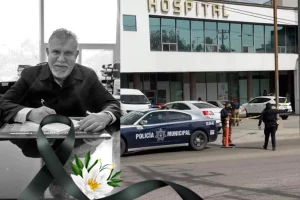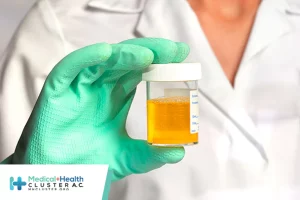CONDENA MH CLÚSTER ATAQUE ARMADO A HOSPITAL ARCÁNGELES
Leer más
The US Now Has a Research Plan for Long COVID—Is It Enough?

More than 2 years after patients with lingering health problems coined the term Long COVID, the US government has unveiled a research plan to understand, prevent, and treat the broad range of persistent and sometimes debilitating disease symptoms that are now known to affect many people after initial SARS-CoV-2 infection. The National Research Action Plan on Long COVID, released this August 3, has been met with a mixture of enthusiasm and disappointment.
It establishes a new office within Health and Human Services (HHS) headed by the assistant secretary for health, Admiral Rachel L. Levine, MD. Levine, who recently spoke with JAMA and published a Viewpoint about the long-term effects of COVID, will oversee the Office of Long COVID Research and Practice as the federal government’s first Long COVID coordinator.
The task before her is daunting. As the research plan report notes, 5% to 30% of people develop Long COVID after SARS-CoV-2 infection, depending on the estimate. A study published after the plan was released estimates that 1 in 8 adults with SARS-CoV-2 infection experience Long COVID. The study’s investigators compared symptoms among people who had and hadn’t been infected and among individuals both before and after their infections, allowing for some of the most reliable estimates to date. Even at the lower end of the various approximations, millions of people in the US likely are living with 1 or more Long COVID symptoms for weeks, months, and sometimes years.
The new plan acknowledges that research is urgently needed to unravel the biological mechanisms that underpin the more than 200 symptoms and signs and 50 conditions attributed to Long COVID and to develop evidence-based treatments for them. But some say the plan—although a step in the right direction—touts already existing federal initiatives that are insufficient and slow-moving.
Upping the Urgency
Several HHS divisions, including the National Institutes of Health (NIH) and the Centers for Disease Control and Prevention (CDC), along with 13 other federal departments, contributed to the research plan, with input from academia, patients, and other stakeholders. The report emphasizes that advancing the state of science, treatments, and services for Long COVID is an all-hands-on-deck effort that must involve public and private partners.
The plan defines Long COVID as “a multifaceted disease that can affect nearly every organ system” and can manifest as new or worsening chronic health problems, including but not limited to heart disease, diabetes, kidney disease, hematologic issues, and mental and neurologic conditions. The signs, symptoms, and conditions continue or arise anew 4 weeks or more after the initial symptomatic or asymptomatic infection and may be relapsing and remitting.
Yale cardiologist and health policy professor Harlan Krumholz, MD, SM, who was an external advisor on the new plan, said that although this definition is likely to evolve over time, setting it was important. “One of the principal problems is that there are a lot of competing ideas about what exactly Long COVID is,” he said in an interview with JAMA. By establishing a broad definition, the government is “giving license to saying that there are lots of different forms of this, and that part of our job on the research side is to begin to organize our knowledge about all these different subgroups.”
The plan also clarifies that the informal name “Long COVID” is essentially interchangeable with the technical term post-COVID conditions, or PCC, which includes the virus’ both direct and indirect effects, while the term postacute sequelae of SARS-CoV-2 infection, or PASC, includes only the direct effects. Convening public and private partners to better align differing Long COVID definitions will be a priority of the federal Long COVID office over the next 6 months.
The research agenda details several goals, ranging from characterizing Long COVID’s full clinical spectrum and understanding its pathophysiology to improving surveillance and epidemiology and testing therapeutics and other interventions. To advance knowledge in these and other areas, the federal government will accelerate and expand on work it is already supporting or conducting, like the NIH-funded Researching COVID to Enhance Recovery, or RECOVER, Initiative and the CDC-funded Innovative Support for Patients with SARS-CoV-2 Infections (INSPIRE) study.
In an interview, Angela Meriquez Vázquez, MSW, who has had post-COVID symptoms since March 2020 and is president of Body Politic, a global COVID-19 patient support group with 11 000 members, praised the establishment of the federal Long COVID office but pointed out that it still needs congressional funding. She called the plan otherwise “underwhelming.”
“It’s mostly a summary of existing efforts,” she said. The consensus among patients, advocates, and many clinicians “is that existing efforts are insufficient, are not connected to the latest research in infection-triggered chronic illnesses, and are moving too slowly considering the wave of mass disability that Long COVID is bringing,” she added.
Echoing this sentiment, Ezekiel Emanuel, MD, an oncologist and codirector of the Healthcare Transformation Institute at the University of Pennsylvania, pointed to the 4-year, $1.15 billion RECOVER Initiative. The NIH last year awarded nearly $470 million of the budget to support clinical investigations. Emanuel noted that roughly 12 months after this funding was announced and just 5 months before the target end-of-year deadline, researchers have recruited about 7000 adults and 300 children—less than 20% of the expected total enrollment—and have yet to launch any clinical trials of treatments.
Emanuel spearheaded a COVID-19 strategic roadmap released earlier this year and was among the academics who were asked to contribute ideas for the federal government’s Long COVID research agenda. He suggested hiring a contract research organization to run RECOVER but the idea wasn’t taken up, he said in an interview.
In his view, the pace and scope of the US government’s research response to Long COVID has been inadequate. “The slowness with which the NIH and the CDC are addressing this problem…is unjustifiable given the urgency of the problem,” he said. “This is equivalent to needing a vaccine, frankly. You’ve got millions, maybe more than 10 million people, afflicted with [Long COVID]. That’s a serious, urgent national problem. And I don’t think they’re approaching it in that way.”
In an emailed response to a request for information about the RECOVER Initiative, the NIH RECOVER team noted that multiple RECOVER studies are underway including an adult cohort study that includes pregnant individuals; pediatric cohort studies including a substudy of infants born to individuals with SARS-CoV-2 infection and a substudy of multisystem inflammatory syndrome in children; a tissue pathology and autopsy study; and 3 large electronic health record studies of adult and pediatric populations.
“NIH is working to accelerate study progress and achieve the diversity of participants that represents the impact of COVID on all populations,” the team wrote in the email. “While these studies are ongoing, the NIH plans to launch clinical trials the fall of 2022 to test a range of interventions to treat and prevent PASC symptoms.” They noted that the cohort studies’ results also may inform future clinical trials.
Improving Clinical Care
Tulane School of Medicine clinical neurologist Michele Longo, MD, MPH, and a colleague opened a post-COVID care clinic in the fall of 2020, one of many such centers launched during the pandemic. The New Orleans–based clinic and more than 40 others are part of the PASC Collaborative, an initiative organized by the American Academy of Physical Medicine and Rehabilitation (AAPM&R). Longo said the collaborative’s members are excited and encouraged by the new research agenda. “The plan definitely addresses the requests that we’ve had for a whole-government response to Long COVID,” she said in an interview.
She also highlighted the plan’s emphasis on equitable access to care. In her view, making sure care is available to all individuals with Long COVID should be the top priority. “We don’t want to see the same health disparities in care that we saw with acute management and treatment of COVID carry into the next public health crisis, which is going to be the care of people with Long COVID,” she said.
Some symptoms patients with Long COVID struggle with like fatigue and shortness of breath can be managed with energy conservation techniques and by taking frequent breaks from prolonged physical or cognitive activity. Physical therapists, occupational therapists, speech therapists, and behavioral health specialists all may have a role in symptom management. But patients first need to get in the door. Her clinic currently has a 4- to 6-month waiting list and elsewhere the delays can be even longer, despite many centers offering both in-person and telemedicine appointments. If access is to be improved, Longo said, Long COVID treatment must be integrated into primary care.
She and Meriquez Vázquez said that’s not currently the case. Meriquez Vázquez said: “The experience of many patients is still going into a doctor’s office, getting a ‘normal’ assessment, getting ‘normal’ lab work, and then being sent on their way.”
“Everybody who’s suffering from Long COVID has a right to be frustrated,” Krumholz said. Although some physicians still may not believe that Long COVID exists—the new research plan explicitly states that it does—others may be flummoxed by the array of nebulous symptoms patients describe, many of which have no biomarker-based tests.
The most frequent symptom is fatigue, according to Longo, and patients also commonly struggle with “brain fog”—problems with focus, memory, and word recollection—sleep disturbances, mood changes, headaches, loss of taste and smell, heart palpitations, dizziness, shortness of breath, cough, chest pain, diarrhea, stomach pain, joint or muscle pain, rashes, and pins-and-needles feelings.
The PASC collaborative and other groups are developing guidance to assist clinicians in treating these symptoms and improve patient care. So far, the PASC collaborative has released consensus guidance statements for fatigue, cognitive symptoms, breathing discomfort, and cardiovascular complications.
An initial priority in the federal research plan is to develop diagnosis and treatment guidance that is comprehensive and equitable. An HHS report on Long COVID services and supports released alongside the plan compiles existing clinical care guidance from several federal agencies and some professional associations including AAPM&R, the American College of Cardiology, and the American Nurses Association.
What’s clear is that ongoing symptoms can seriously affect patients’ ability to work, get schooling, and care for themselves and their families. In fact, the Brookings Institute earlier this year estimated that about 1 million people in the US may be out of the workforce due to Long COVID at any given time, likely contributing to labor shortages. A forthcoming update suggests the number could be 2 to 4 times higher, Katie Bach, MBA, MSc, a nonresident senior fellow at Brookings, wrote in an email to JAMA.
Meriquez Vázquez said that many primary care physicians, particularly those who serve the Medicaid population, aren’t aware that Long COVID can manifest as diagnosable conditions such as postural orthostatic tachycardia syndrome (POTS), mast cell activation syndrome (MCAS), and myalgic encephalomyelitis/chronic fatigue syndrome (ME/CFS).
“There’s definitely growing frustration that the information that does exist on these conditions is not being readily disseminated by public health out to clinicians, especially primary care,” she said. She noted that scientific efforts are also lagging: “For the most part big investments like the RECOVER Initiative are largely observational and not necessarily driving new research on ME/CFS, or POTS, or MCAS, which is really where I think the patient community wants the research to go in a much bigger way.”
For his part, Krumholz has partnered with a Yale colleague, immunobiologist Akiko Iwasaki, PhD, on a large study to correlate clusters of Long COVID symptoms with specific signals from patients’ “immune signatures,” including chemokines and cytokines, T cells, and autoantibodies. The goal is to better understand the immune system’s role in Long COVID symptoms.
“We need to work as fast as we can with all deliberate speed,” Krumholz said, “making sure we’re doing good science but recognizing every day that passes, people are just suffering.
What Is Long COVID?
A new US government research plan presents an interim definition of Long COVID. It broadly defines Long COVID as signs, symptoms, and conditions that continue or develop after initial COVID-19 or SARS-CoV-2 infection. The plan defines the signs, symptoms, and conditions as follows:
-
Are present 4 weeks or more after the initial phase of infection
-
May be multisystemic
-
May present with a relapsing-remitting pattern and progression or worsening over time, with the possibility of severe and life-threatening events even months or years after infection
The plan emphasizes that Long COVID is not 1 single condition. Instead, it represents many potentially overlapping entities that likely have different biological causes and different risk factors and outcomes.
Adapted from the National Research Action Plan on Long COVID. Department of Health and Human Services; August 2022.
Créditos: Comité científico Covid




